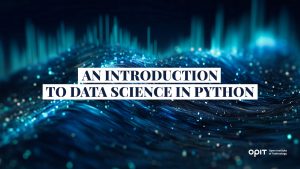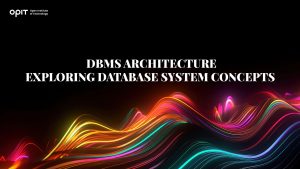

In a database, you have entities (which have attributes), and relationships between those entities. Managing them is key to preventing chaos from engulfing your database, which is where the concept of keys comes in. These unique identifiers enable you to pick specific rows in an entity set, as well as define their relationships to rows in other entity sets, allowing your database to handle complex computations.
Let’s explore keys in DBMS (database management systems) in more detail, before digging into everything you need to know about the most important keys – primary keys.
Understanding Keys in DBMS
Keys in DBMS are attributes that you use to identify specific rows inside a table, in addition to finding the relation between two tables. For example, let’s say you have a table for students, with that table recording each student’s “ID Number,” “Name,” “Address,” and “Teacher” as attributes. If you want to identify a specific student in the table, you’ll need to use one of these attributes as a key that allows you to pull the student’s record from your database. In this case “ID Number” is likely the best choice because it’s a unique attribute that only applies to a single student.
Types of Keys in DBMS
Beyond the basics of serving as unique identifiers for rows in a database, keys in DBMS can take several forms:
- Primary Keys – An attribute that is present in the table for all of the records it contains, with each instance of that attribute being unique to the record. The previously-mentioned “ID Number” for students is a great example, as no student can have the same number as another student.
- Foreign Key – Foreign keys allow you to define and establish relationships between a pair of tables. If Table A needs to refer to the primary key in Table B, you’ll use a foreign key in Table A so you have values in that table to match those in Table B.
- Unique Key – These are very similar to primary keys in that both contain unique identifiers for the records in a table. The only difference is that a unique key can contain a null value, whereas a primary key can’t.
- Candidate Key – Though you may have picked a unique attribute to serve as your primary key, there may be other candidates within a table. Coming back to the student example, you may record the phone numbers and email addresses of your students, which can be as unique as the student ID assigned to the individual. These candidate keys are also unique identifiers, allowing them to be used in tandem with a primary key to identify a specific row in a table.
- Composite Key – If you have attributes that wouldn’t be unique when taken alone, but can be combined to form a unique identifier for a record, you have a composite key.
- Super Key – This term refers to the collection of attributes that uniquely identify a record, meaning it’s a combination of candidate keys. Just like an employer sifting through job candidates to find the perfect person, you’ll sift through your super key set to choose the ideal primary key amongst your candidate keys.
So, why are keys in DBMS so important?
Keys ensure you maintain data integrity across all of the tables that make up your database. Without them, the relationships between each table become messy hodgepodges, creating the potential for duplicate records and errors that deliver inaccurate reports from the database. Having unique identifiers (in the form of keys) allows you to be certain that any record you pull, and the relationships that apply to that record, are accurate and unrepeated.
Primary Key Essentials
As mentioned, any unique attribute in a table can serve as a primary key, though this doesn’t mean that every unique attribute is a great choice. The following characteristics help you to define the perfect primary key.
Uniqueness
If your primary key is repeatable across records, it can’t serve as a unique identifier for a single record. For example, our student table may have multiple people named “John,” so you can’t use the “Name” attribute to find a specific student. You need something unique to that student, such as the previously mentioned ID number.
Non-Null Values
Primary keys must always contain a value, else you risk losing records in a table because you have no way of calling upon them. This need for non-null values can be used to eliminate some candidates from primary key content. For instance, it’s feasible (though unlikely) that a student won’t have an email address, creating the potential for null values that mean the email address attribute can’t be a primary key.
Immutability
A primary key that can change over time is a key that can cause confusion. Immutability is the term used for any attribute that’s unchanging to the point where it’s an evergreen attribute that you can use to identify a specific record forever.
Minimal
Ideally, one table should have one attribute that serves as its primary key, which is where the term “minimal” comes in. It’s possible for a table to have a composite or super key set, though both create the possibility of confusion and data integrity issues.
The Importance of a Primary Key in DBMS
We can distill the reason why having a primary key in DBMS for each of your tables is important into the following reasons:
- You can use a primary key to identify each unique record in a table, meaning no multi-result returns to your database searches.
- Having a primary key means a record can’t be repeated in the table.
- Primary keys make data retrieval more efficient because you can use a single attribute for searches rather than multiple.
Functions of Primary Keys
Primary keys in DBMS serve several functions, each of which is critical to your DBMS.
Data Identification
Imagine walking into a crowded room and shouting out a name. The odds are that several people (all of whom have the same name) will turn their heads to look at you. That’s basically what you’re doing if you try to pull records from a table without using a primary key.
A primary key in DBMS serves as a unique identifier that you can use to pull specific records. Coming back to the student example mentioned earlier, a “Student ID” is only applicable to a single student, making it a unique identifier you can use to find that student in your database.
Ensure Data Integrity
Primary keys protect data integrity in two ways.
First, they prevent duplicate records from building up inside a single table, ensuring you don’t get multiple instances of the same record. Second, they ensure referential integrity, which is the term used to describe what happens when one table in your database needs to refer to the records stored in another table.
For example, let’s say you have tables for “Students” and “Teachers” in your database. The primary keys assigned to your students and teachers allow you to pull individual records as needed from each table. But every “Teacher” has multiple “Students” in their class. So, your primary key from the “Students” table is used as a foreign key in the “Teachers” table, allowing you to denote the one-to-many relationship between a teacher and their class of students. That foreign key also ensures referential integrity because it contains the unique identifiers for students, which you can look up in your “Students” table.
Data Retrieval
If you need to pull a specific record from a table, you can’t rely on attributes that can repeat across several records in that table. Again, the “Name” example highlights the problem here, as several people could have the same name. You need a unique identifier for each record so you can retrieve a single record from a huge set without having to pore through hundreds (or even thousands) of records.
Best Practices for Primary Key Selection
Now that you understand how primary keys in DBMS work, here are some best practices for selecting the right primary key for your table:
- Choose Appropriate Attributes as Candidates – If the attribute isn’t unique to each record, or it can contain a null value (as is the case with email addresses and phone numbers), it’s not a good candidate for a primary key.
- Avoid Using Sensitive Information – Using personal or sensitive information as a primary key creates a security risk because anybody who cracks your database could use that information for other purposes. Make your primary keys unique, and only applicable, to your database, which allows you to encrypt any sensitive information stored in your tables.
- Consider Surrogate Keys – Some tables don’t have natural attributes that you can use as primary keys. In these cases, you can create a primary key out of thin air and assign it to each record. The “Student ID” referenced earlier is a great example, as students entering a school don’t come with their own ID numbers. Those numbers are given to the student (or simply used in the database that collects their data), making them surrogate keys.
- Ensure Primary Key Stability – Any attribute that can change isn’t suitable for use as a primary key because it causes stability issues. Names, email addresses, phone numbers, and even bank account details are all things that can change, making them unsuitable. Evergreen and unchanging is the way to go with primary keys.
Choose the Right Keys for Your Database
You need to understand the importance of a primary key in DBMS (or multiple primary keys when you have several tables) so you can define the relationships between tables and identify unique records inside your tables. Without primary keys, you’ll find it much harder to run reports because you won’t feel confident in the accuracy of the data returned. Each search may pull up duplicate or incorrect records because of a lack of unique identifiers.
Thankfully, many of the tables you create will have attributes that lend themselves well to primary key status. And even when that isn’t the case, you can use surrogate keys in DBMS to assign primary keys to your tables. Experiment with your databases, testing different potential primary keys to see what works best for you.
Related posts

Bring talented tech experts together, set them a challenge, and give them a deadline. Then, let them loose and watch the magic happen. That, in a nutshell, is what hackathons are all about. They’re proven to be among the most productive tech events when it comes to solving problems and accelerating innovation.
What Is a Hackathon?
Put simply, a hackathon is a short-term event – often lasting just a couple of days, or sometimes even only a matter of hours – where tech experts come together to solve a specific problem or come up with ideas based on a central theme or topic. As an example, teams might be tasked with discovering a new way to use AI in marketing or to create an app aimed at improving student life.
The term combines the words “hack” and “marathon,” due to how participants (hackers or programmers) are encouraged to work around-the-clock to create a prototype, proof-of-concept, or new solution. It’s similar to how marathon runners are encouraged to keep running, putting their skills and endurance to the test in a race to the finish line.
The Benefits of Hackathons
Hackathons provide value both for the companies that organize them and the people who take part. Companies can use them to quickly discover new ideas or overcome challenges, for example, while participants can enjoy testing their skills, innovating, networking, and working either alone or as part of a larger team.
Benefits for Companies and Sponsors
Many of the world’s biggest brands have come to rely on hackathons as ways to drive innovation and uncover new products, services, and opportunities. Meta, for example, the brand behind Facebook, has organized dozens of hackathons, some of which have led to the development of well-known Facebook features, like the “Like” button. Here’s how hackathons help companies:
- Accelerate Innovation: In fast-moving fields like technology, companies can’t always afford to spend months or years working on new products or features. They need to be able to solve problems quickly, and hackathons create the necessary conditions to deliver rapid success.
- Employee Development: Leading companies like Meta have started to use annual hackathons as a way to not only test their workforce’s skills but to give employees opportunities to push themselves and broaden their skill sets.
- Internal Networking: Hackathons also double up as networking events. They give employees from different teams, departments, or branches the chance to work with and learn from one another. This, in turn, can promote or reinforce team-oriented work cultures.
- Talent Spotting: Talents sometimes go unnoticed, but hackathons give your workforce’s hidden gems a chance to shine. They’re terrific opportunities to see who your best problem solvers and most creative thinkers at.
- Improving Reputation: Organizing regular hackathons helps set companies apart from their competitors, demonstrating their commitment to innovation and their willingness to embrace new ideas. If you want your brand to seem more forward-thinking and innovative, embracing hackathons is a great way to go about it.
Benefits for Participants
The hackers, developers, students, engineers, and other people who take part in hackathons arguably enjoy even bigger and better benefits than the businesses behind them. These events are often invaluable when it comes to upskilling, networking, and growing, both personally and professionally. Here are some of the main benefits for participants, explained:
- Learning and Improvement: Hackathons are golden opportunities for participants to gain knowledge and skills. They essentially force people to work together, sharing ideas, contributing to the collective, and pushing their own boundaries in pursuit of a common goal.
- Networking: While some hackathons are purely internal, others bring together different teams or groups of people from different schools, businesses, and places around the world. This can be wonderful for forming connections with like-minded individuals.
- Sense of Pride: Everyone feels a sense of pride after accomplishing a project or achieving a goal, but this often comes at the end of weeks or months of effort. With hackathons, participants can enjoy that same satisfying feeling after just a few hours or a couple of days of hard work.
- Testing Oneself: A hackathon is an amazing chance to put one’s skills to the test and see what one is truly capable of when given a set goal to aim for and a deadline to meet. Many participants are surprised to see how well they respond to these conditions.
- Boosting Skills: Hackathons provide the necessary conditions to hone and improve a range of core soft skills, such as teamwork, communication, problem-solving, organization, and punctuality. By the end, participants often emerge with more confidence in their abilities.
Hackathons at OPIT
The Open Institute of Technology (OPIT) understands the unique value of hackathons and has played its part in sponsoring these kinds of events in the past. OPIT was one of the sponsors behind ESCPHackathon 6, for example, which involved 120 students given AI-related tasks, with mentorship and guidance from senior professionals and developers from established brands along the way.
Marco Fediuc, one of the participants, summed up the mood in his comments:
“The hackathon was a truly rewarding experience. I had the pleasure of meeting OPIT classmates and staff and getting to know them better, the chance to collaborate with brilliant minds, and the opportunity to take part in an exciting and fun event.
“Participating turned out to be very useful because I had the chance to work in a fast-paced, competitive environment, and it taught me what it means to stay calm and perform under pressure… To prospective Computer Science students, should a similar opportunity arise, I can clearly say: Don’t underestimate yourselves!”
The new year will also see the arrival of OPIT Hackathon 2026, giving more students the chance to test their skills, broaden their networks, and enjoy the one-of-a-kind experiences that these events never fail to deliver. This event is scheduled to be held February 13-15, 2026, and is open to all OPIT Bachelor’s and Master’s students, along with recent graduates. Interested parties have until February 1 to register.

The Open Institute of Technology (OPIT) recently held its first-ever career fair to showcase its wide array of career education options and services. Representatives from numerous high-profile international companies were in attendance, and students enjoyed unprecedented opportunities to connect with business leaders, expand their professional networks, and pave the way for success in their future careers.
Here’s a look back at the event and how it ties into OPIT’s diverse scope of career services.
Introducing OPIT
For those who aren’t yet familiar, OPIT is an EU-accredited Higher Education Institution, offering online degrees in technological fields such as computer science, data science, artificial intelligence, cybersecurity, and digital business. Aimed at making high-level tech education accessible to all, OPIT has assembled a stellar team of tutors and experts to train the tech leaders of tomorrow.
The First OPIT Career Fair
OPIT’s first career fair was held on November 19 and 20. And as with OPIT’s lectures, it was an exclusively online event, which ensured that every attendee had equal access to key lectures and information. Interested potential students from all over the world were able to enjoy the same great experience, demonstrating a core principle that OPIT has championed from the very start – the principles of accessibility and the power of virtual learning.
More than a dozen leading international companies took part in the event, with the full guest list including representatives from:
- Deloitte
- Dylog Hitech
- EDIST Engineering Srl
- Tinexta Cyber
- Datapizza
- RWS Group
- WE GRELE FRANCE
- Avatar Investments
- Planet Farms
- Coolshop
- Hoist Finance Italia
- Gruppo Buffetti S.p.A
- Nesperia Group
- Fusion AI Labs
- Intesi Group
- Reply
- Mindsight Ventures
This was a fascinating mix of established enterprises and emerging players. Deloitte, for example, is one of the largest professional services networks in the world in terms of both revenue and number of employees. Mindsight Ventures, meanwhile, is a newer but rapidly emerging name in the fields of AI and business intelligence.
The Response
The first OPIT career fair was a success, with many students in attendance expressing their joy at being able to connect with such a strong lineup of prospective employers.
OPIT Founder and Director Riccardo Ocleppo had this to say:
“I often say internally that our connection with companies – through masterclasses, thesis and capstone projects, and career opportunities – is the ‘cherry on the cake’ of the OPIT experience!
“It’s also a core part of our mission: making higher education more practical, more connected, and more aligned with what happens in the real world.
“Our first Career Fair says a lot about our commitment to building an end-to-end learning and professional growth experience for our community of students.
“Thank you to the Student and Career Services team, and to Stefania Tabi for making this possible.”
Representatives from some of the companies that attended also shared positive impressions of the event. A representative from Nesperia Group, for example, said:
“Nesperia Group would like to thank OPIT for the warm welcome we received during the OPIT Career Day. We were pleased to be part of the event because we met many talented young professionals. Their curiosity and their professional attitude really impressed us, and it’s clear that OPIT is doing an excellent job supporting their growth. We really believe that events like these are important because they can create a strong connection between companies and future professionals.”
The Future
Given the enormous success of the first OPIT career fair, it’s highly likely that students will be able to enjoy more events like this in the years to come. OPIT is clearly committed to making the most of its strong business connections and remarkable network to provide opportunities for growth, development, and employment, bringing students and businesses together.
Future events will continue to allow students to connect with some of the biggest businesses in the world, along with emerging names in the most exciting and innovative tech fields. This should allow OPIT graduates to enter the working world with strong networks and firm connections already established. That, in turn, should make it easier for them to access and enjoy a wealth of beneficial professional opportunities.
Given that OPIT also has partnerships in place with numerous other leading organizations, like Hype, AWS, and Accenture, the number and variety of the companies potentially making appearances at career fairs in the future should no doubt increase dramatically.
Other Career Services at OPIT
The career fair is just one of many ways in which OPIT leverages its company connections and offers professional opportunities and career support to its students. Other key career services include:
- Career Coaching: Students are able to schedule one-on-one sessions with their own mentors and career advisors. They can receive feedback on their resumes, practice and improve their interview skills, or work on clear action plans that align with their exact professional goals.
- Resource Hub: The OPIT Resource Hub is jam-packed with helpful guides and other resources to help students plan out and take smart steps in their professional endeavors. With detailed insights and practical tips, it can help tech graduates get off to the best possible start.
- Career Events: The career fair is only one of several planned career-related events organized by OPIT. Other events are planned to give students the chance to learn from and engage with industry experts and leading tech firms, with workshops, career skills days, and more.
- Internships: OPIT continues to support students after graduation, offering internship opportunities with leading tech firms around the world. These internships are invaluable for gaining experience and forging connections, setting graduates up for future success.
- Peer Mentoring: OPIT also offers a peer mentoring program in which existing students can team up with OPIT alumni to enjoy the benefits of their experience and unique insights.
These services – combined with the recent career day – clearly demonstrate OPIT’s commitment to not merely educating the tech leaders of the future, but also to supporting their personal and professional development beyond the field of education, making it easier for them to enter the working world with strong connections and unrivaled opportunities.
Have questions?
Visit our FAQ page or get in touch with us!
Write us at +39 335 576 0263
Get in touch at hello@opit.com
Talk to one of our Study Advisors
We are international
We can speak in:


